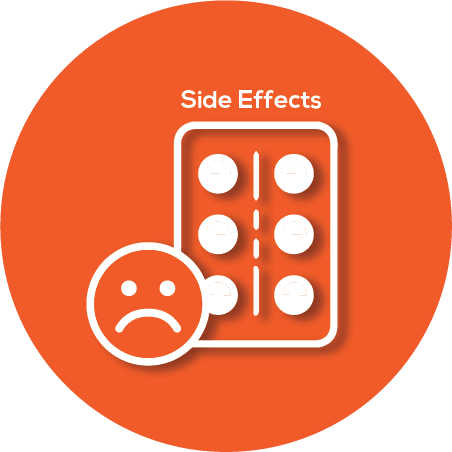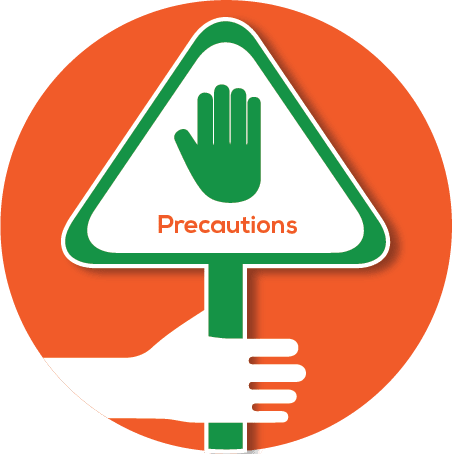Naprosyn D 250mg Tablet 10s NAPROXEN + DOMPERIDONE
ABOUT NAPROSYN D 250MG TABLET 10S
Naprosyn D 250mg Tablet 10s is a brand name for the generic medicine(s) Naproxen (250mg) + Domperidone (10mg). This combination is primarily used to treat conditions such as pain and inflammation associated with various forms of arthritis, as well as to manage nausea and vomiting. Naproxen is a non-steroidal anti-inflammatory drug (NSAID) that works by reducing hormones that cause inflammation and pain in the body. Domperidone is a prokinetic agent that helps to increase the movements or contractions of the stomach and intestines, facilitating the passage of food through the stomach.
Naprosyn D 250mg Tablet 10s is available in tablet form, making it convenient for oral administration. This medication is produced by RPG Life Sciences Ltd, a reputable pharmaceutical company known for its commitment to quality and innovation in healthcare. RPG Life Sciences Ltd meets WHO Good Manufacturing Practice (GMP) certification criteria according to CDSCO, ensuring that the product is manufactured under stringent quality standards.
Alternatives to Naprosyn D 250mg Tablet 10s include other brands with the same composition, such as Naproxen + Domperidone tablets from different manufacturers. Patients are advised to consult with their healthcare provider to determine the most suitable option for their specific needs.
INTRODUCTION OF NAPROSYN D 250MG TABLET 10S
Naprosyn D 250mg Tablet 10s is a versatile medication designed to address two common health issues: pain and gastrointestinal discomfort. The dual-action formula combines Naproxen, a potent anti-inflammatory agent, with Domperidone, a medication that alleviates nausea and enhances gastrointestinal motility. This combination makes Naprosyn D particularly effective for individuals suffering from conditions like osteoarthritis, rheumatoid arthritis, and ankylosing spondylitis, where pain and inflammation are prevalent, and gastrointestinal side effects from other medications may occur.
The inclusion of Domperidone in the formulation is particularly beneficial for patients who experience nausea as a side effect of NSAIDs like Naproxen. By promoting smoother gastric emptying and reducing nausea, Domperidone enhances patient comfort and compliance with the treatment regimen. This makes Naprosyn D 250mg Tablet 10s a preferred choice for long-term management of chronic pain conditions, as it addresses both the primary symptoms and potential side effects.
Patients taking Naprosyn D 250mg Tablet 10s can expect relief from pain and inflammation, improved joint function, and a reduction in gastrointestinal discomfort. The medication is typically well-tolerated, with a safety profile that supports its use in a wide range of patients. However, as with any medication, it is important for patients to follow their healthcare provider's instructions and report any unusual symptoms or side effects. Regular monitoring and consultation with a healthcare professional ensure that the treatment remains effective and safe over time.
CONDITIONS TREATED BY NAPROSYN D 250MG TABLET 10S
Naprosyn D 250mg Tablet 10s is used to manage conditions such as osteoarthritis, rheumatoid arthritis, ankylosing spondylitis, and other inflammatory disorders. It is also effective in treating nausea and vomiting associated with these conditions or as a side effect of other medications.
MOLECULE NAME
Naproxen (250mg) + Domperidone (10mg)
HOW IT WORKS NAPROSYN D 250MG TABLET 10S
Naprosyn D 250mg Tablet 10s works by combining the effects of Naproxen and Domperidone. Naproxen reduces inflammation and pain by inhibiting the production of prostaglandins, chemicals in the body that promote inflammation. Domperidone enhances gastrointestinal motility and reduces nausea by blocking dopamine receptors in the gut, facilitating smoother digestion and reducing discomfort.
COMMON SIDE EFFECTS OF NAPROSYN D 250MG TABLET 10S
Common side effects of Naprosyn D 250mg Tablet 10s may include stomach pain, heartburn, nausea, dizziness, headache, and dry mouth. Patients should consult their healthcare provider if these symptoms persist or worsen.
HOW TO TAKE NAPROSYN D 250MG TABLET 10S
Naprosyn D 250mg Tablet 10s should be taken as directed by a healthcare provider. It is usually taken orally with a full glass of water, preferably with food to minimize gastrointestinal discomfort. Patients should not exceed the recommended dosage and should follow their healthcare provider's instructions closely.
PRECAUTIONS OF NAPROSYN D 250MG TABLET 10S
Patients should inform their healthcare provider of any allergies, medical conditions, or other medications they are taking before starting Naprosyn D 250mg Tablet 10s. Caution is advised for individuals with a history of gastrointestinal bleeding, heart disease, or kidney problems. Pregnant or breastfeeding women should consult their doctor before use.
FOOD & DRUG INTERACTIONS OF NAPROSYN D 250MG TABLET 10S
Patients should avoid alcohol and certain medications such as other NSAIDs, anticoagulants, and certain antibiotics while taking Naprosyn D 250mg Tablet 10s, as these can increase the risk of side effects. It is important to discuss all medications and supplements with a healthcare provider to avoid potential interactions.
ALTERNATIVE BRANDS OF NAPROSYN D 250MG TABLET 10S
Alternative brands with the same composition include Naproxen + Domperidone tablets from various manufacturers. Patients should consult their healthcare provider for suitable alternatives.
FACT MEDICINE OF NAPROSYN D 250MG TABLET 10S
Naprosyn D 250mg Tablet 10s is a combination medication that effectively manages pain, inflammation, and gastrointestinal discomfort. It is produced by RPG Life Sciences Ltd, a company known for its adherence to quality standards. Patients should follow their healthcare provider's guidance to ensure safe and effective use.


Are the medicines in combination of Domperidone and Naproxen safe to take together?
Domperidone, which is a medication used to relieve nausea and vomiting, and Naproxen, which is a nonsteroidal anti-inflammatory drug (NSAID) used to reduce pain and inflammation, can interact with each other. This interaction may increase the risk of side effects such as stomach irritation or ulcers, as both drugs can affect the stomach lining. To monitor for these interactions, it's important to watch for symptoms like stomach pain, heartburn, or bleeding. Regular check-ups with a healthcare provider can help manage these risks. They may recommend taking the medications with food or using additional medications to protect the stomach lining. Always inform your doctor about all the medications you are taking to ensure safe use.

Are there harms and risks from taking combination of Domperidone and Naproxen?
Domperidone, which is used to relieve nausea and vomiting, can cause side effects like dry mouth, headache, and dizziness. A significant adverse effect is an irregular heartbeat, which refers to an abnormal heart rhythm. Naproxen, which is a pain reliever and anti-inflammatory, may cause side effects such as heartburn, stomach pain, and dizziness. A serious adverse effect is gastrointestinal bleeding, which means bleeding in the stomach or intestines. Both medicines can cause dizziness, which refers to feeling lightheaded or unsteady. However, they have unique attributes: Domperidone is primarily used for nausea, while Naproxen is used for pain and inflammation. It's important to use these medications as directed by a healthcare provider to minimize risks. Always consult a doctor if you experience severe side effects.

Can I take combination of Domperidone and Naproxen if I am pregnant?
Domperidone is a medication used to relieve nausea and vomiting, which are symptoms of feeling sick and throwing up. During pregnancy, the safety of Domperidone is not well established, and it is generally advised to avoid it unless the benefits outweigh the risks. Naproxen is a nonsteroidal anti-inflammatory drug (NSAID), which is used to reduce pain and inflammation, which refers to swelling and redness. Naproxen is not recommended during pregnancy, especially in the third trimester, due to potential risks to the baby, such as heart problems. Both medications should be used with caution during pregnancy and only under medical supervision. They share the common attribute of being potentially risky during pregnancy, but they are used for different purposes: Domperidone for nausea and Naproxen for pain and inflammation. Always consult a healthcare provider before using these medications when pregnant.

Can I take combination of Domperidone and Naproxen while breastfeeding?
Domperidone, which is a medication used to relieve nausea and vomiting, is sometimes used to increase milk production in breastfeeding mothers. However, it can pass into breast milk in small amounts. The safety of Domperidone during breastfeeding is not fully established, and it should be used with caution, especially in mothers with heart conditions. Naproxen, which is a nonsteroidal anti-inflammatory drug (NSAID) used to relieve pain and inflammation, also passes into breast milk in small amounts. It is generally considered safe for short-term use during breastfeeding, but long-term use should be avoided due to potential risks to the infant. Both medications share the common attribute of passing into breast milk, and their use during breastfeeding should be carefully considered. It is important for breastfeeding mothers to consult healthcare providers before using either medication to ensure the safety of their infants.

Can I take combination of Domperidone and Naproxen with other prescription drugs?
Domperidone, which is used to relieve nausea and vomiting, can interact with other medications that affect heart rhythm, such as certain antibiotics and antifungals. It can also interact with drugs that inhibit the liver enzyme CYP3A4, which is responsible for breaking down many drugs in the body. Naproxen, which is a nonsteroidal anti-inflammatory drug (NSAID) used to relieve pain and inflammation, can interact with blood thinners, increasing the risk of bleeding, and with other NSAIDs, which can increase the risk of stomach ulcers. Both Domperidone and Naproxen can affect the heart, so they should be used cautiously in people with heart conditions. They also share the potential to interact with medications that affect the liver's ability to process drugs, which can lead to increased side effects. It's important to consult a healthcare provider before combining these medications with others.

For how long is combination of Domperidone and Naproxen taken?
Domperidone, which is used to relieve nausea and vomiting, is typically used for short-term treatment, often not exceeding one week. It works by increasing the movements or contractions of the stomach and intestines, which helps move food through the stomach more quickly. Naproxen, which is a nonsteroidal anti-inflammatory drug (NSAID), is used to relieve pain and inflammation. It can be used for both short-term and long-term treatment, depending on the condition being treated, such as arthritis or menstrual pain. Both medicines are taken orally and can cause side effects like stomach upset. However, they are used for different purposes: Domperidone for digestive issues and Naproxen for pain and inflammation. It's important to follow a healthcare provider's instructions for both medications to avoid potential side effects or complications.

How does combination of Domperidone and Naproxen work?
Domperidone works by blocking dopamine receptors, which are proteins that respond to the chemical dopamine, in the gut and brain. This action helps to increase the movement of the stomach and intestines, allowing food to move more easily through the digestive system. It is often used to relieve nausea and vomiting. Naproxen, on the other hand, is a non-steroidal anti-inflammatory drug (NSAID), which means it reduces inflammation and pain in the body. It works by blocking the production of certain natural substances, called prostaglandins, which are involved in inflammation and pain. Both Domperidone and Naproxen share the common attribute of providing relief from discomfort, but they do so in different ways. Domperidone targets the digestive system, while Naproxen targets inflammation and pain. They do not share the same mechanism of action, as they work on different pathways in the body.

How does one take combination of Domperidone and Naproxen?
Domperidone is used to relieve nausea and vomiting, which are feelings of sickness and the act of throwing up. It is usually taken before meals, as food can slow down its absorption. There are no specific food restrictions when taking Domperidone. Naproxen is a non-steroidal anti-inflammatory drug, which is a type of medicine that reduces pain and inflammation. It is best taken with food or milk to help protect the stomach from irritation. People taking Naproxen should avoid alcohol, as it can increase the risk of stomach problems. Both medicines should be taken as directed by a healthcare provider. While Domperidone and Naproxen have different uses and instructions, they both require careful attention to how they are taken to ensure effectiveness and reduce side effects.

How do I know if combination of Domperidone and Naproxen is working?
The benefits of Domperidone and Naproxen are measured by their effectiveness in treating specific symptoms. Domperidone is used to relieve nausea and vomiting, which are feelings of sickness and the act of throwing up, by increasing the movement of the stomach and intestines. Naproxen is used to reduce pain and inflammation, which is swelling and redness, in conditions like arthritis, which is a disease causing painful inflammation and stiffness of the joints. Both medicines are assessed by how well they alleviate the symptoms they are meant to treat. They share the common attribute of providing relief from discomfort, but they work in different ways and are used for different conditions. Domperidone works on the digestive system, while Naproxen targets pain and inflammation in the body. Both require monitoring for side effects to ensure they are safe and effective for the patient.

How do I store combination of Domperidone and Naproxen?
Domperidone, which is used to relieve nausea and vomiting, does not require refrigeration. It should be stored at room temperature, away from moisture and heat. Similarly, Naproxen, which is a pain reliever and anti-inflammatory medication, also does not need refrigeration. It should be kept at room temperature, away from direct sunlight and moisture. Both medications share the common attribute of being stored at room temperature, which means they should be kept in a cool, dry place. However, they have unique uses: Domperidone is primarily for gastrointestinal issues, while Naproxen is used for pain and inflammation. It's important to follow the storage instructions on the packaging or provided by a healthcare professional to ensure the effectiveness of these medications.

How effective is combination of Domperidone and Naproxen?
Domperidone is a medication used to relieve nausea and vomiting, which are symptoms of feeling sick and throwing up. It works by blocking dopamine receptors, which are parts of the brain that can trigger these symptoms. Naproxen, on the other hand, is a non-steroidal anti-inflammatory drug (NSAID), which means it helps reduce inflammation, pain, and fever. It works by blocking enzymes that cause inflammation in the body. Both Domperidone and Naproxen are effective in their own ways. Domperidone is particularly useful for gastrointestinal issues, while Naproxen is often used for pain relief in conditions like arthritis. They share the common attribute of providing relief from discomfort, but they do so through different mechanisms. Domperidone focuses on the digestive system, while Naproxen targets inflammation and pain. Both are well-studied and have been shown to be effective in their respective areas.

How long does it take for combination of Domperidone and Naproxen to work?
The time it takes for a combination medicine to start working depends on the individual medicines involved. For example, if the combination includes ibuprofen, which is a pain reliever and anti-inflammatory drug, it typically starts working within 20 to 30 minutes. On the other hand, if the combination includes acetaminophen, which is another pain reliever, it usually begins to work within 30 to 60 minutes. Both medicines are used to relieve pain and reduce fever, which means they share the common attribute of providing pain relief. However, ibuprofen also reduces inflammation, which is swelling and redness, while acetaminophen does not. Therefore, the combination medicine may start working within 20 to 60 minutes, depending on the specific medicines included and their unique attributes.

What disease or symptom is combination of Domperidone and Naproxen used for?
Domperidone is used to treat nausea and vomiting, which are symptoms of feeling sick and throwing up. It works by helping the stomach move food more easily into the intestines. Naproxen, on the other hand, is used to relieve pain and inflammation, which is the body's response to injury or infection, causing redness, swelling, and pain. It is often used for conditions like arthritis, which is a disease causing painful inflammation and stiffness of the joints, and menstrual cramps, which are painful periods. Both Domperidone and Naproxen help manage symptoms, but they do so in different ways. Domperidone focuses on digestive issues, while Naproxen targets pain and inflammation. They do not share common uses, but both aim to improve comfort and quality of life for those experiencing discomfort from their respective conditions.

What is combination of Domperidone and Naproxen?
Domperidone is commonly used to relieve nausea and vomiting, which are symptoms of feeling sick and throwing up. It works by blocking dopamine receptors, which are parts of the brain that trigger nausea. Naproxen is often used to reduce pain and inflammation, which is the body's response to injury or infection. It works by inhibiting enzymes called COX-1 and COX-2, which are involved in producing substances that cause inflammation and pain. While both medicines help alleviate discomfort, Domperidone targets the digestive system, whereas Naproxen focuses on reducing pain and inflammation throughout the body.

What is the usual dose of combination of Domperidone and Naproxen?
The usual adult daily dose for Domperidone, which is a medicine used to relieve nausea and vomiting, is typically 10 milligrams taken up to three times a day. On the other hand, Naproxen, which is a nonsteroidal anti-inflammatory drug (NSAID) used to relieve pain and inflammation, is usually taken in doses of 250 to 500 milligrams twice a day. Domperidone works by blocking dopamine receptors, which are proteins that help transmit signals in the brain, in the gut to speed up the movement of food through the stomach. Naproxen reduces the production of prostaglandins, which are chemicals that promote inflammation, pain, and fever. Both medicines are taken orally and can help manage symptoms, but they work in different ways and are used for different conditions. It's important to follow the prescribed doses and consult a healthcare provider for advice tailored to individual needs.

Who should avoid taking combination of Domperidone and Naproxen?
Domperidone, which is used to relieve nausea and vomiting, should not be used by people with heart problems, as it can cause serious heart rhythm issues. It is also not recommended for those with liver problems. Naproxen, which is a pain reliever and anti-inflammatory, should be used cautiously by people with stomach ulcers or bleeding, as it can worsen these conditions. It is also not suitable for those with severe heart failure. Both Domperidone and Naproxen can interact with other medications, so it is important to inform your doctor about all the medicines you are taking. They both should be used with caution in older adults, as they may be more sensitive to the side effects. Additionally, neither should be used during pregnancy unless absolutely necessary, as they can affect the developing baby. Always consult a healthcare professional before starting or stopping these medications.










.svg)
